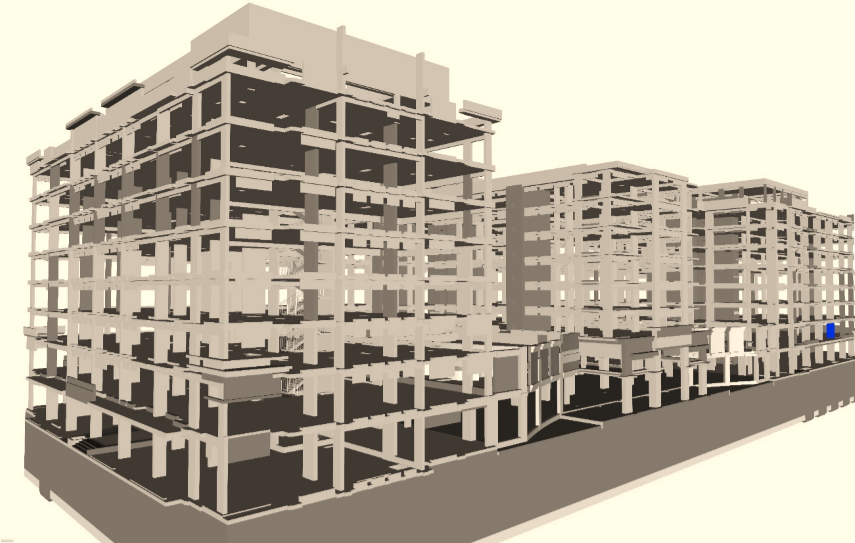Structural design has undergone a significant evolution over the years, from traditional methods to modern technologies. Among these innovations, Building Information Modeling (BIM) services have emerged as a game-changer in the construction industry. In this blog, we’ll delve into the evolution of structural design and explore how BIM services have revolutionized the way buildings are conceptualized, designed, and constructed.
The Evolution of Structural Design
Structural BIM Services design has its roots in ancient civilizations, where rudimentary methods were employed to construct buildings that could withstand various forces. Over time, advancements in engineering principles and materials led to the development of more sophisticated techniques, such as arches, domes, and trusses. These innovations allowed for the construction of larger, taller, and more complex structures.
In the 20th century, structural design underwent a revolution with the advent of computer-aided design (CAD) software. This technology enabled engineers to create precise drawings and models of building components, improving accuracy and efficiency in the design process. However, CAD was limited in its capabilities, primarily focusing on 2D representations of buildings.
The Emergence of BIM Services
The introduction of Building Information Modeling (BIM) services marked a paradigm shift in structural design. Unlike CAD, BIM is a collaborative process that involves creating and managing digital representations of physical and functional characteristics of buildings. BIM models contain rich data that goes beyond geometry, including material properties, spatial relationships, and construction schedules.
BIM services enable architects, engineers, and contractors to work together seamlessly throughout the project lifecycle. By centralizing information in a shared digital environment, BIM facilitates better coordination, communication, and decision-making. This integrated approach helps to minimize errors, reduce rework, and optimize project outcomes.
Benefits of BIM Services
One of the key benefits of BIM services is the ability to visualize and simulate building performance before construction begins. By creating virtual prototypes of buildings, engineers can identify potential conflicts and optimize design solutions early in the process. This proactive approach helps to minimize costly changes and delays during construction.
Additionally, BIM services enable engineers to perform detailed Structural BIM Services analysis and simulations, allowing for more accurate predictions of how buildings will behave under different loads and conditions. This information is invaluable for optimizing structural performance, ensuring safety, and meeting regulatory requirements. Furthermore, BIM services enhance collaboration among project stakeholders by providing a centralized platform for sharing information and coordinating activities. By breaking down silos and fostering transparency, BIM promotes a culture of teamwork and accountability, leading to better project outcomes.
BIM Services: Transforming Structural Design
Building Information Modeling (BIM) services represent a paradigm shift in structural design, offering a holistic approach that goes beyond traditional 2D drafting. BIM enables engineers to create digital representations of buildings that contain rich data about their physical and functional characteristics. This comprehensive model serves as a central repository of information that can be accessed and updated by all project stakeholders throughout the lifecycle of the project.
The Role of BIM in Visualizing Building Performance
One of the primary advantages of BIM services is the ability to visualize and simulate building performance before construction begins. By creating virtual prototypes of buildings, engineers can identify potential conflicts, optimize design solutions, and evaluate the impact of design decisions on performance metrics such as energy efficiency, structural integrity, and occupant comfort. This proactive approach helps to minimize risks and uncertainties, leading to more predictable project outcomes.
Optimizing Structural Performance through Analysis and Simulation
BIM services empower engineers to perform detailed structural analysis and simulations, enabling them to assess how buildings will behave under various loads and conditions. By leveraging advanced analysis tools and techniques, engineers can optimize structural performance, ensure safety, and meet regulatory requirements. From analyzing wind and seismic loads to optimizing material usage, BIM enables engineers to make informed decisions that enhance the resilience and efficiency of structures.
Enhancing Collaboration with Centralized Information Sharing
Central to the success of BIM services is their ability to facilitate collaboration among project stakeholders. By providing a centralized platform for sharing information and coordinating activities, BIM fosters better communication, coordination, and decision-making. This integrated approach breaks down silos and promotes a culture of teamwork and accountability, leading to smoother project execution and better project outcomes.
Real-World Applications: Case Studies of BIM in Action
Several real-world examples illustrate the transformative impact of BIM services on structural design. For instance, the Burj Khalifa in Dubai, the tallest building in the world, was designed using BIM technology. The complex structural system of the Burj Khalifa required precise coordination and analysis, which BIM facilitated. Similarly, the One World Trade Center in New York City utilized BIM services to streamline the design and construction process, resulting in a resilient and iconic structure.
Conclusion
The evolution of Structural BIM Services design has been driven by a combination of technological advancements, changing industry practices, and evolving client demands. ENGISOFT ENGINEERING – BIM Staffing & BIM Services represent the culmination of these trends, offering a comprehensive approach to building design and construction. By embracing BIM, engineers can unlock new possibilities in creativity, efficiency, and collaboration, ultimately leading to the creation of safer, more sustainable, and more innovative buildings. As BIM continues to evolve, its impact on the future of structural design will only grow stronger, shaping the built environment for generations to come.











